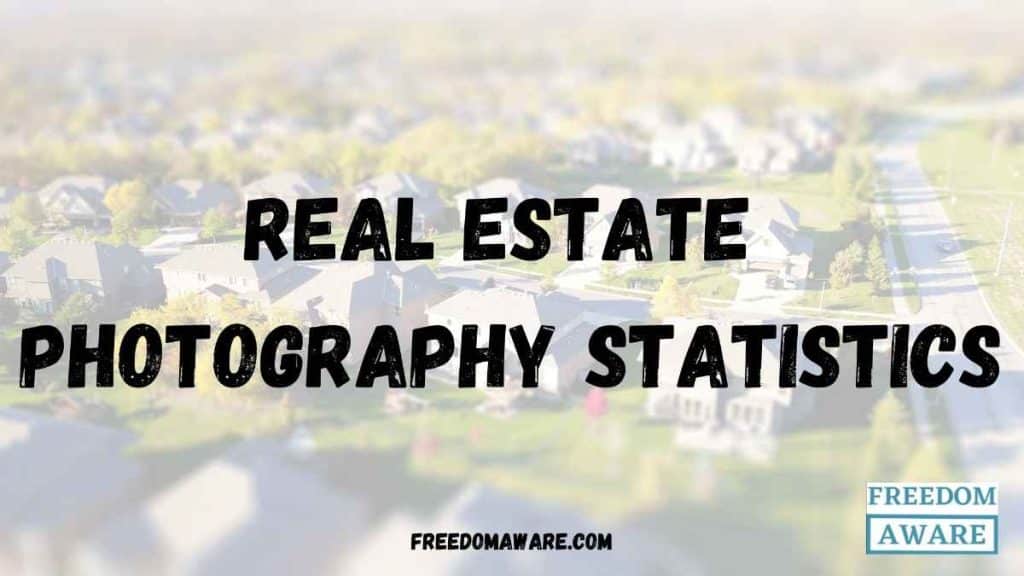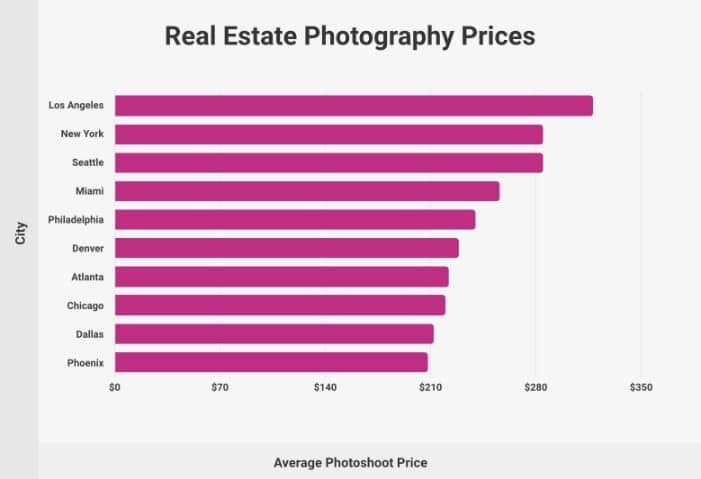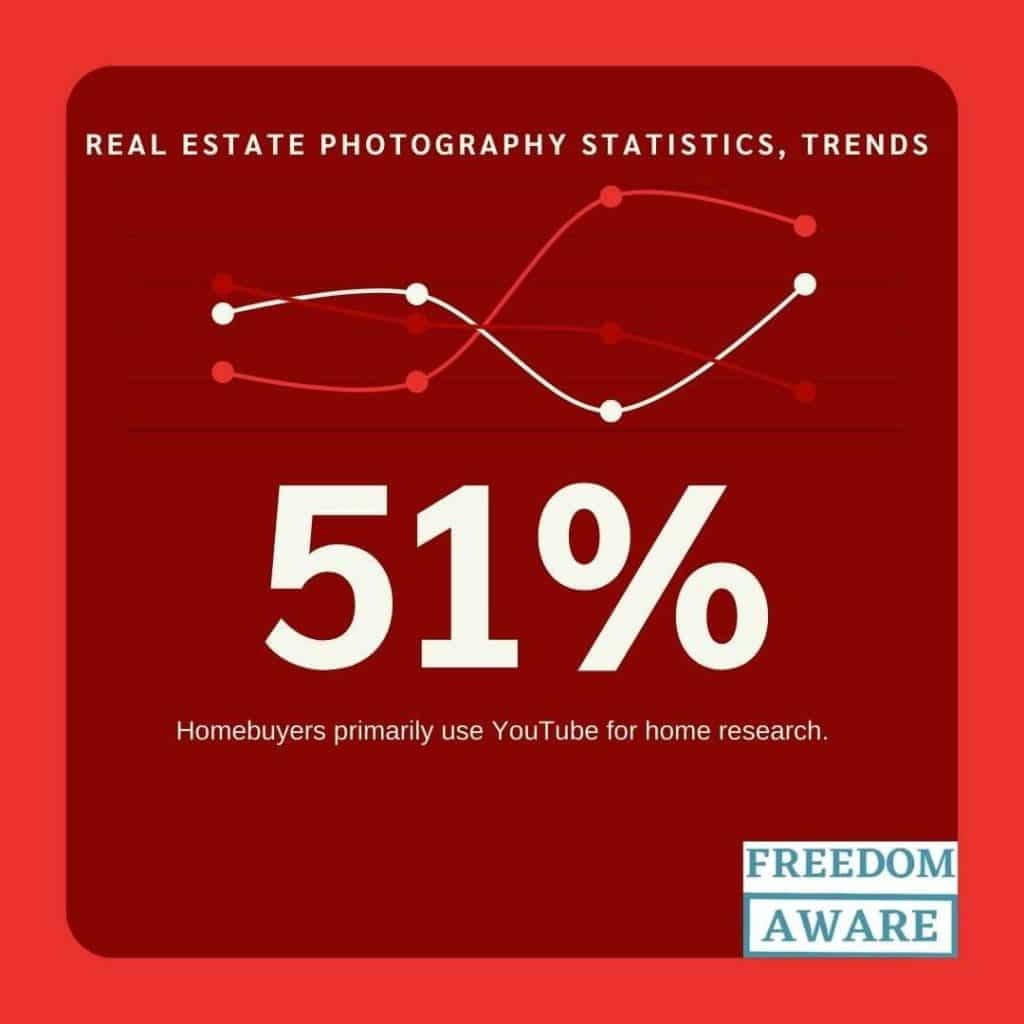
Boost your real estate marketing strategy with these eye-opening real estate photography statistics;
The real estate industry is highly competitive, and agents, brokers, and property owners are constantly looking for ways to stand out from the crowd. One often overlooked aspect of real estate marketing is photography. High-quality visuals can make all the difference in attracting potential buyers, increasing engagement, and ultimately driving sales.
But just how important is real estate photography?
Let’s dive into some surprising statistics that highlight the power of photography in real estate.
Key Real Estate Photography Statistics (Real Estate Photography Statistics)
- Professional photography boosts sales speed: Real estate listings featuring professional photos sell 32% quicker.
- Aerial views accelerate sales: Homes showcased with aerial photography find buyers 68% faster.
- Video listings attract more interest: Property listings accompanied by videos generate 403% more inquiries.
- Virtual tours drive buyer decisions: In 2020, 63% of homebuyers made offers based solely on virtual tours.
- Professional photography investment: The average cost to professionally photograph a home for sale is $230
General Real Estate Photography Statistics (Real Estate Photography Statistics, Trend)
- The U.S. real estate photography industry employs over 6,181 people and comprises approximately 6,891 businesses in 2024. (Source)
- A significant 63% of homebuyers made purchase offers without physically inspecting the property. (Source)
- An overwhelming majority (99%) of homebuyers aged 24 to 57 relied on the internet to search for homes in 2022. (Source)
- Properties showcased with professional photography sell 32% faster. (Source)

- A survey by the National Association of Realtors revealed that the overwhelming majority (77%) of respondents considered photos to be an essential component of real estate listings. Only a small fraction (6%) deemed photos unimportant, with the remaining respondents holding a neutral stance. (Source)
- Thoroughly photographing a typical UK property takes around 45-60 minutes. (Source)
- The U.S. real estate photography market is projected to generate $268.3 million in revenue by 2024, with a modest 0.6% annual growth rate over the past five years. (Source)
- Aerial photography in property listings speeds up sales by 68%. (Source)
- Professional property photos increase listing views by 61%. (Source)
- Video content generates a staggering 403% more inquiries for real estate listings. (Source)
- Almost three-quarters of real estate agents attribute high-quality photography to securing more listings. (Source)

- The average cost for capturing and delivering 10 to 25 MLS-ready photographs of a 1,500 to 3,000-square-foot home in Los Angeles is approximately $318. (Source)
- Agents utilizing professional photographers earn double the commission ($8,683) compared to those without ($4,292). (Source)
- High-quality real estate photos hold viewer interest for an average of 20 seconds. (Source)
- Even among the oldest demographic, aged 77 to 97, a significant portion (84%) utilized the internet when searching for a home. This underscores the absolute necessity of compelling real estate photography in property listings. (Source)
- Photos remain the top essential feature for 85% of homebuyers on real estate websites, followed by videos (27%) and virtual tours (39%). (Source)
- 10% of real estate agents employ video marketing for homes. (Source)
- Virtual tours enhance engagement 5-10 times, extending buyer interaction with listings. (Source)
- Only 15% of property listings feature high-quality photos. (Source)
- U.S. real estate photography businesses surged 11.5% from 5,353 to 5,967 between 2022 and 2023. (Source)
- The U.S. real estate photography industry is labor-intensive, with wages accounting for 30.5% of costs, followed by purchases (12.8%) and rent/utilities (5.5%). (Source)
- As of August 12, 2024, U.S. real estate photographers earn an average annual salary of $62,338. (Source)
- Most Realtors (77%) use social media for real estate, with nearly half (47%) considering it the top lead generation source. (Source)
- Over 60% of UK consumers deem estate agent photos subpar. (Source)
- More than half of buyers desire 8-10 aerial photos per listing, with drone photography increasing in-person viewings by 65%. (Source)
- The global drone photography market, valued at $617.6 million in 2023, is projected to reach $3.4 billion by 2033, expanding at a rapid 18.7% annual rate. (Source)
- The virtual tour market is poised for substantial growth, soaring from $0.96 billion in 2023 to $17.88 billion by 2035, at an impressive annual growth rate of 27.9%. (Source)
- Real estate photographers in the United States can earn a substantial income, with top earners reporting an annual salary of $74,000 as of August 12, 2024. (Source)
| Real Estate Photographer Salary (Real estate photography statistics) | ||||
| Annual Salary | Monthly Pay | Weekly Pay | Hourly Wage | |
| Top Earners | $74,000 | $6,166 | $1,423 | $36 |
| 75th Percentile | $71,000 | $5,916 | $1,365 | $34 |
| Average | $62,338 | $5,194 | $1,198 | $30 |
| 25th Percentile | $57,000 | $4,750 | $1,096 | $27 |
- Real estate photographers in select U.S. cities command substantially higher salaries than the nationwide average of $62,338. Leading the pack are Soledad, California, with earnings 40.3% above the national average at $87,462, followed by Berkeley, California, and Vineyard Haven, Massachusetts, both offering salaries significantly exceeding the national benchmark. (Source)
- High-quality real estate photography can increase online engagement by up to 118%, enhancing property visibility and attracting more buyers. (Source)
- Forty percent of property buyers use online video platforms to research homes. (Source)
- Buyers value photos (77%), physical staging (58%), videos (74%), and virtual tours (42%) as crucial listing elements, according to buyer’s agents. (Source)
- Sellers prioritize photos (89%), physical staging (44%), and videos (44%) as important listing features, based on seller’s agent reports. (Source)
- Property listings with videos generate four times more inquiries. Nearly 80% of agents utilize drone media to showcase properties. (Source)

- Homebuyers (51%) primarily use YouTube for home research. (Source)
- Virtual tours increase property views by 87%, while 54% of buyers disregard listings without high-quality images. (Source)
- Century 21’s video social media campaign resulted in a 20% increase in home sales. (Source)
- A relatively small percentage of agents, just 35%, utilize the services of professional photographers. (Source)
Emerging Tendencies in Real Estate Photography for 2025 (Real Estate Photography Statistics, Trend)
Drone Photography: A New Altitude for Real Estate (Real Estate Photography Statistics, Trends)
Drone technology has redefined how properties are showcased. By capturing breathtaking aerial perspectives, drones offer an unparalleled view of a property’s size, layout, and surroundings. This innovative approach not only highlights a property’s unique features but also provides buyers with a comprehensive understanding of its location and context.
Beyond capturing stunning exteriors, drones can also offer interior overviews, creating immersive virtual tours. This combination of aerial and interior footage provides a competitive advantage for real estate agents, setting their listings apart in a crowded market. As drone technology becomes increasingly accessible and affordable, it is transforming the real estate industry by offering a fresh and compelling way to present properties.
Virtual Staging: A Digital Makeover (Real Estate Photography Statistics, Trends)
Virtual staging has revolutionized property presentation. By digitally furnishing and decorating empty spaces, this innovative technique transforms ordinary photos into inviting showcases. Unlike traditional staging, which requires physical effort and expense, virtual staging offers a cost-effective and time-efficient solution.
By creating realistic and appealing interior designs, virtual staging helps potential buyers visualize the property’s potential. With its ability to quickly adapt to various styles and preferences, virtual staging has become an indispensable tool for real estate professionals seeking to maximize property appeal and accelerate sales.
Twilight Photography: A Golden Hour for Real Estate (Real Estate Photography Statistics, Trends)
Twilight photography has emerged as a powerful tool in real estate marketing. By capturing properties at dawn or dusk, these images showcase properties in a uniquely captivating light. Studies show that listings with twilight photos receive significantly more views, with those using a twilight shot as the main image experiencing an even greater boost.
Twilight photography highlights a property’s architecture, landscaping, and outdoor amenities in a way that daytime photos cannot. The soft, warm light creates an inviting atmosphere, making properties appear more luxurious and desirable. This trend has exploded in popularity in 2024, thanks to advancements in camera technology and the increasing importance of visually stunning online listings.
Twilight photos are more than just aesthetically pleasing; they are a strategic investment for real estate agents looking to stand out in a competitive market.
HDR Photography: Illuminating Real Estate (Real Estate Photography Statistics, Trends)
HDR photography will remain a cornerstone of commercial real estate imaging in 2024. By merging multiple exposures, this technique produces images with exceptional detail and dynamic range. Particularly beneficial in spaces with stark contrasts like large windows and shadowed corners, HDR captures the full spectrum of light, preventing underexposed or overexposed areas.
While mobile devices offer basic HDR capabilities, professional cameras excel at delivering natural-looking, high-quality results. This technology is essential for showcasing commercial properties in their best light.

Conclusion (Real Estate Photography Statistics, Trends)
Professional photography is indispensable in today’s competitive real estate market. By understanding the latest trends and statistics, agents, sellers, and photographers can leverage visual storytelling to enhance property appeal, accelerate sales, and build stronger brands. The data is clear: exceptional real estate photography drives increased online visibility, quicker sales, higher prices, and greater customer satisfaction. To achieve standout results, invest in top-tier photography and harness the power of every pixel.


Leave a Reply